Are you wondering if viscose is really eco-friendly? Well, let’s take a closer look at the facts. Viscose, also known as rayon, is a popular fabric made from wood pulp. But how sustainable is its production process? In this article, we will explore the environmental impact of viscose production, including deforestation and water pollution. We will also delve into the chemical usage and carbon emissions associated with viscose. Finally, we’ll discuss sustainable alternatives and the role of certification in ensuring viscose sustainability. It’s time to make informed choices about our clothing materials!
What Is Viscose and How Is It Made
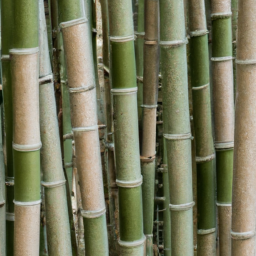
Viscose is a type of fabric that’s made from wood pulp and is often used as a sustainable alternative to materials like cotton or polyester. The viscose production process involves several steps. First, the wood pulp is dissolved in a chemical solution to create a thick liquid called "viscose." This viscose is then forced through small holes called spinnerets, creating long strands of fiber. These fibers are then chemically treated and spun into yarn, which can be woven into fabric.
While viscose offers certain environmental benefits compared to other fabrics, it also has some drawbacks. One key concern is its impact on water resources. The production process requires large amounts of water for dissolving the wood pulp and washing the fibers. Additionally, the chemicals used in the manufacturing process can contribute to water pollution if not properly managed.
Another environmental issue associated with viscose production is deforestation. Wood pulp comes from trees, and increased demand for viscose can lead to unsustainable logging practices and loss of forest habitats.
To mitigate these environmental impacts, efforts have been made to improve the sustainability of viscose production. Some manufacturers are implementing closed-loop systems that recycle chemicals and reduce water usage. Others are sourcing their wood pulp from sustainably managed forests or using alternative sources like bamboo or recycled textiles.
Environmental Impact of Viscose Production
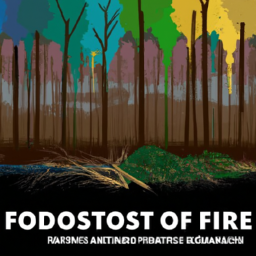
The environmental impact of producing viscose can be reduced by implementing sustainable practices. Viscose production is known to have significant deforestation effects due to the extraction of wood pulp from trees, mainly from endangered and old-growth forests. However, sustainable fashion choices are emerging as a solution to mitigate these negative impacts.
To address deforestation effects, sustainable viscose production focuses on using alternative sources of cellulose such as bamboo or agricultural waste. These alternatives reduce pressure on forests and promote biodiversity conservation. Additionally, sustainable practices prioritize responsible forest management, ensuring that the wood used for viscose comes from sustainably managed forests certified by organizations like the Forest Stewardship Council (FSC).
Furthermore, closed-loop systems are being implemented in some viscose factories where chemicals and solvents used in the production process are recycled and reused instead of being discharged into water bodies. This not only reduces pollution but also conserves resources.
Consumers play a crucial role in promoting sustainability in fashion by making conscious choices. By opting for garments made with eco-friendly materials like Tencel™ or Lyocell, which are derived from responsibly sourced wood pulp, individuals can support the shift towards a more environmentally friendly textile industry.
Deforestation and Viscose: The Connection

To understand the connection between deforestation and viscose, you should consider the extraction of wood pulp from endangered forests. Viscose, a popular fabric used in clothing production, is derived from cellulose found in trees. Unfortunately, the demand for viscose has led to unsustainable sourcing practices that contribute to deforestation.
Deforestation has a significant impact on our planet. It not only destroys valuable habitats for countless species but also disrupts ecosystems and reduces biodiversity. Moreover, deforestation contributes to climate change by releasing large amounts of carbon dioxide into the atmosphere.
Sustainable sourcing is crucial when it comes to combating deforestation caused by viscose production. Several initiatives have been implemented to address this issue. For example, some companies are adopting more responsible practices by sourcing their wood pulp from sustainably managed forests or using alternative materials such as bamboo or recycled textiles.
It is important for consumers to be aware of the environmental consequences associated with viscose production and make informed choices when purchasing clothing made from this material. By supporting brands that prioritize sustainable sourcing and promoting transparency in their supply chains, we can all contribute to reducing deforestation and promoting a greener fashion industry.
Water Pollution: The Hidden Cost of Viscose
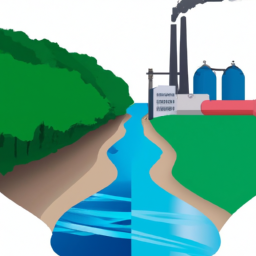
Water pollution, caused by the chemical-intensive production processes of viscose, poses a hidden cost to our environment. Viscose is a popular fabric made from wood pulp, which undergoes various chemical treatments to transform it into fibers suitable for textile production. These chemicals, such as carbon disulfide and sodium hydroxide, are used in large quantities and can have detrimental effects on water quality.
During the manufacturing process, these chemicals are often released into nearby water bodies without proper treatment. This untreated wastewater contains toxic substances that can contaminate rivers, lakes, and oceans. The resulting water pollution not only endangers aquatic life but also affects human health.
The problem is further exacerbated by the disposal of textile waste generated during viscose production. When these fabrics are discarded or improperly disposed of, they can release harmful pollutants into the environment. Additionally, textile waste often ends up in landfills where it decomposes and releases greenhouse gases like methane.
To mitigate this issue, effective water treatment systems must be implemented to remove or neutralize harmful chemicals from wastewater before it is discharged into natural ecosystems. Moreover, efforts should be made to reduce textile waste through recycling and sustainable disposal practices.
Chemical Usage in Viscose Production
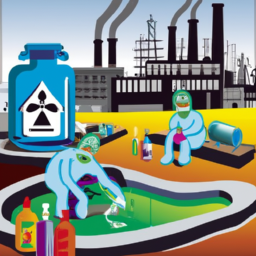
Did you know that the chemical-intensive production processes of viscose involve the use of harmful substances? Viscose, also known as rayon, is a popular fabric made from cellulose fibers derived from wood pulp. However, the production of viscose involves multiple chemical treatments that can have detrimental effects on both human health and the environment.
To create viscose, wood pulp is treated with a mixture of chemicals including sodium hydroxide and carbon disulfide. These chemicals are used to dissolve the cellulose and turn it into a solution called viscose. Unfortunately, carbon disulfide has been linked to various health issues such as neurological disorders and reproductive problems. Additionally, these chemicals can also contribute to air pollution and water contamination if not properly managed.
However, there are chemical alternatives and sustainable production methods being developed to address these concerns. One such alternative is Lyocell, which is produced using a closed-loop system where almost all solvents are reused instead of being discharged as wastewater. This reduces environmental impact significantly compared to traditional viscose production.
Furthermore, efforts are being made to improve wastewater treatment techniques in order to minimize the release of harmful substances into water bodies. Sustainable sourcing practices for raw materials like wood pulp are also being implemented.
Viscose and Carbon Emissions: A Closer Look
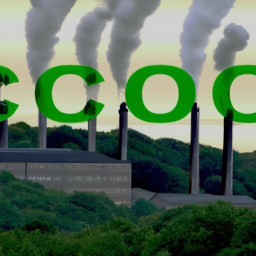
Have you considered the carbon emissions associated with the production of viscose? Viscose, often touted as a sustainable and eco-friendly alternative to materials like cotton, is not without its environmental drawbacks. The manufacturing process of viscose involves multiple stages that contribute to air pollution and increase the carbon footprint.
Viscose production begins with dissolving wood pulp into a solution, which is then extruded through spinnerets to form fibers. Throughout this process, large amounts of carbon dioxide are released into the atmosphere. In fact, studies have shown that viscose manufacturing emits more greenhouse gases than many other industries.
One major contributor to these emissions is the use of chemicals like sodium hydroxide and carbon disulfide in the production process. These chemicals can have harmful effects on both human health and the environment. Additionally, when wood pulp is sourced from deforestation or unsustainable logging practices, it further exacerbates the carbon footprint of viscose manufacturing.
To mitigate these issues, efforts are being made to improve the sustainability of viscose production. Some manufacturers are implementing closed-loop systems that recycle chemicals and reduce emissions. Furthermore, sourcing wood pulp from sustainably managed forests can help minimize environmental impact.
Sustainable Alternatives to Viscose

If you’re looking for sustainable alternatives, there are other materials available that offer similar properties to viscose. In the world of sustainable fashion, eco-conscious textiles have gained popularity due to their minimal impact on the environment. One such alternative is Tencel, also known as lyocell. Tencel is made from wood pulp sourced from sustainably managed forests and uses a closed-loop production process, meaning that the solvents used in manufacturing are recycled and reused. This not only reduces waste but also minimizes water pollution. Another option is Modal, which is derived from beech trees grown without the use of pesticides or artificial irrigation. Modal has a silky texture similar to viscose but requires less water during production.
Hemp is another eco-friendly alternative to consider. It is a highly versatile plant that requires little water and no pesticides to grow. Hemp fabric has excellent breathability and durability, making it suitable for various clothing items.
Lastly, organic cotton serves as an excellent substitute for viscose. Grown without synthetic fertilizers or harmful chemicals, organic cotton significantly reduces environmental impacts such as soil degradation and water pollution.
The Role of Certification in Viscose Sustainability
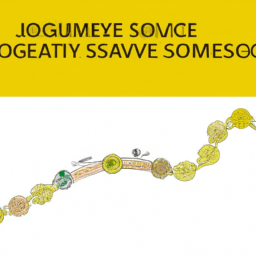
When considering sustainable alternatives for your wardrobe, it’s important to look for certifications that ensure the production of viscose is environmentally responsible. Certification plays a crucial role in ensuring that the sourcing and production of viscose align with sustainability standards.
One important certification to look out for is the Forest Stewardship Council (FSC) certification. This certification guarantees that the wood used in the production of viscose comes from responsibly managed forests. By choosing products made from FSC-certified viscose, you can have confidence that you are supporting sustainable sourcing practices.
Another certification to consider is the Global Organic Textile Standard (GOTS). GOTS ensures not only the environmental responsibility of viscose production but also considers social criteria throughout the supply chain. It covers aspects such as fair labor practices and waste management, making it a comprehensive certification for sustainable sourcing.
Additionally, there are other certifications like EcoCert and Oeko-Tex Standard 100 that focus on different aspects of sustainability in viscose production. These certifications address factors such as chemical usage, wastewater treatment, and worker safety.
Consumer Responsibility: Making Eco-Friendly Choices

Now that you understand the importance of certification in determining the sustainability of viscose, it’s time to explore your role as a consumer in making eco-friendly choices when it comes to fashion. With increasing awareness about environmental issues, many individuals are seeking out sustainable textile choices.
Eco-friendly fashion refers to clothing and accessories made from materials that have minimal impact on the environment throughout their lifecycle. When it comes to sustainable textile choices, there are several options available. One popular choice is organic cotton, which is grown without harmful chemicals and pesticides. Another option is hemp, a versatile and durable material that requires fewer resources to grow.
In addition to natural fibers, recycled textiles are also gaining popularity in eco-friendly fashion. These textiles are made from post-consumer waste such as plastic bottles or discarded clothing, reducing the need for new raw materials.
As a responsible consumer, you can make a difference by opting for brands that prioritize sustainability and transparency in their supply chains. Look for certifications such as GOTS (Global Organic Textile Standard) or OEKO-TEX Standard 100 which ensure environmentally friendly production processes.
Frequently Asked Questions
Are There Any Alternatives to Viscose That Are More Sustainable?
Looking for alternatives to viscose? There are several sustainable fabric options you can consider. Tencel, made from wood pulp, is a popular choice known for its low environmental impact. Hemp, a versatile plant fiber, requires minimal water and pesticides to grow. Organic cotton is another option, as it avoids harmful chemicals used in conventional cotton production. Additionally, recycled polyester and linen can be viable alternatives. These fabrics offer more sustainable choices compared to traditional viscose materials.
How Does Certification Play a Role in Ensuring the Sustainability of Viscose Production?
Certification plays a crucial role in ensuring the sustainability of viscose production. Through certification processes, such as the Forest Stewardship Council (FSC) or the Programme for the Endorsement of Forest Certification (PEFC), viscose producers can demonstrate that their raw materials come from responsibly managed forests. This helps address concerns about deforestation and ensures that sustainable methods are being used. Certification also holds manufacturers accountable for environmentally friendly practices throughout the entire production process, further promoting sustainable production of viscose.
What Are the Hidden Costs of Water Pollution Associated With Viscose Production?
Hidden costs associated with water pollution in viscose production can have a significant environmental impact. The discharge of harmful chemicals and untreated wastewater into water bodies can lead to the contamination of aquatic ecosystems. This pollution not only harms marine life but also affects the overall ecological balance. Additionally, it can pose risks to human health if contaminated water is used for drinking or irrigation purposes. These hidden costs highlight the need for sustainable practices in viscose production to mitigate its negative impact on water resources.
What Is the Connection Between Deforestation and Viscose Production?
Deforestation is a significant concern when it comes to viscose production. The process involves extracting cellulose from trees, mainly from ancient and endangered forests. This extraction contributes to deforestation on a large scale, leading to the loss of biodiversity and disruption of ecosystems. Furthermore, the environmental impact extends beyond just deforestation. Chemicals used in the production of viscose also pose risks to water sources, soil quality, and air pollution. These factors highlight the need for sustainable alternatives in the textile industry.
What Can Consumers Do to Make Eco-Friendly Choices When It Comes to Purchasing Viscose Products?
To make eco-friendly choices when buying viscose products, consider looking for items made from manufacturers that prioritize sustainable sourcing and production. Check if the company uses eco friendly manufacturing processes, such as closed-loop systems that recycle chemicals and water. Additionally, research whether they have certifications like FSC or PEFC, which ensure responsible forestry practices. By supporting brands committed to sustainability, you can help promote a more environmentally friendly viscose industry.
Conclusion
In conclusion, if you are looking to make eco-friendly choices in your clothing purchases, it is important to consider the environmental impact of viscose production. While viscose itself is made from renewable materials such as wood pulp, its production process involves deforestation, water pollution, and chemical usage. Sustainable alternatives to viscose exist, such as recycled polyester or organic cotton. Additionally, certifications like the Forest Stewardship Council can help ensure that the viscose you choose comes from responsibly managed sources. Ultimately, as a consumer, it is crucial to be aware of these issues and make informed decisions when it comes to supporting sustainable fashion practices.